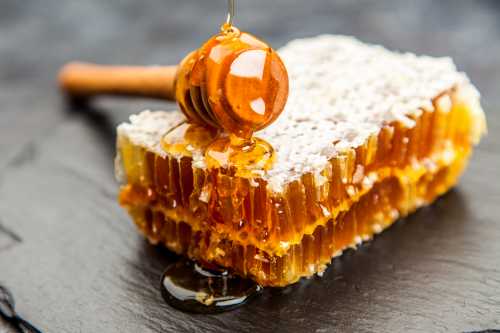Pollen Analysis Of Honey - Melissopalynology
The study of pollen in honey (called 'melissopalynology') can help confirm the geographical origin of
a honey as well as the floral source.
In simple terms this means that it is possible to confirm that the honey originated in the geographical location stated by the seller, and that it is uncontaminated and actually comes from the biological source claimed.
The Importance Of Pollen Analysis Of Honey - Melissopalynology

Melissopalynological studies are important for three principal reasons:
- To ensure that honey is not adulterated
For example, so that people who purchase premium honeys such as manuka honey, are getting a genuine product (consider that there have been reports of more manuka honey being sold in the world each year than is actually produced); or to ensure that a standard blossom honey has not been diluted or contaminated with other products such as corn syrup. - To ensure that honey is correctly labelled with regard to the biological source
For example, honey marketed as honeydew honey (forest honey) should be what exactly that, and not a widely available blossom honey which is usually cheaper. - To ensure that honey is not illegally labelled as being from one country (or part of the world) when it has, in fact, come from multiple countries or regions.
Transshipment of honey (as this is known) can be damaging to the economy and the beekeepers and apiarists of the ‘receiving’ country.

Which methods do melissopalynolgists use in the analysis of pollen in honey?
The work is based on the fact that each flower species (and therefore each potential floral source of honey) has a unique pollen. This pollen can therefore be studied to determine the exact geographical location and floral source of honey.
Melissopalynolgists use a complex method to determine the origin of honey.
Raw honey is partly diluted with warm water and alcohol, centrifuged and then examined under a light microscope.
Pollen concentrations can be calculated, and it is also possible to identify pollen grains, sometimes down to genus level (occasionally to species level). By reference to pollen atlases (see below) it is then possible to identify the source of the honey.
Honey certification and pollen atlases
In order to achieve the objectives listed above, pollen atlases have
been produced. As yet, these pollen
atlases do not cover the entire world. Such
atlases have been produced covering Europe, USA, and North Africa. There is still a need to complete the data
for SE Asia.
The ultimate aim is to improve honey certification. This work is important because of a number of controversies in the honey market. Here I will just mention two.
Firstly, China is the biggest producer of honey in the world, and also the biggest exporter. However, in the past, Chinese honey was associated with high levels of chloramphenicol – an antibiotic used by Chinese beekeepers, which makes its way into the honey.
This lead to the temporary banning of Chinese honey both in the USA and in the EU. Unfortunately, chloramphenicol can cause a medical condition known as aplastic anaemia in humans.
There have been accusations that a number of countries have been relabelling contaminated Chinese honey as being from their own country. Relabelled, contaminated honey has been found in Europe.
Secondly, relabelling honey from one country as being from a different country can increase the price. For example, Chinese honey is probably the cheapest in the global honey trade, but the price is virtually double if it is relabelled as Argentinian honey, and increases some five-fold if relabelled as New Zealand honey.
Clearly, again this is fraudulently misleading the honey-purchasing public worldwide, and potentially exposing people to hazardous substances.
Final comment
There remains a need to expand the geographical range of the pollen atlases and also to create more melissopaynpologists worldwide in order to ensure a more comprehensive and reliable process for honey certification.
Resources
1. Petersen S.; Bryant V.; The study of Pollen and its role in the honey market. June 2011 American Bee Journal 151(6):591-594

